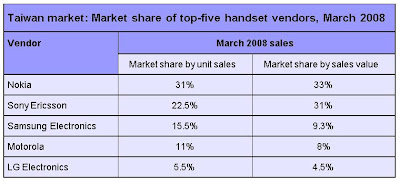23rd April 2008
SAN FRANCISCO -(Dow Jones)- With Deutsche Telekom's T-Mobile USA preparing to ship out its first cellphones built on Google's open Android platform later this year, wireless carriers are expecting an avalanche of innovation from users - and radical changes to what customers expect and demand.
But some disagree on where start-ups should focus their efforts if they aim to make money in this fast-changing landscape.
At the Wireless Innovations 2008 conference in Redwood City, Calif., sponsored by Dow Jones & Co., Joe Sims, vice president and general manager of T-Mobile's broadband and new business division, said he had already seen prototypes of the company's Android-based phone, which are scheduled to ship in this year's final quarter.
"I'm impressed," he said. "We will have more than one product...(The move to an open platform) will be innovation across the board, not just one device."
T-Mobile, like other carriers, was leery of Google at first, because the open platform that the search giant was pushing seemed radical and untested, Sims said. T-Mobile is now a part of Google's Open Handset Alliance, as is chip maker Qualcomm.
Like T-Mobile, Qualcomm was "skeptical" of Google's plan at first, said Sayeed Choudhury, Qualcomm's vice president of product management for CDMA technologies. "But we got over that hurdle when we saw the use-case models," Choudhury said. "The Web-browsing, the taking and uploading of pictures."
Choudhury said he expects big changes to happen fast once the Android phones get into consumers' hands. Nedim Fresko, director of strategic platform initiatives at Blackberry maker Research in Motion, predicted T-Mobile's release would be a "wake-up call for innovation."
But conference panelists differed on what areas of mobile technology - video distribution, social networking, enterprise or entertainment - were likely to heat up first.
"Security is the issue," Fresko said. "People want secure, managed and safe" networks.
John Smelzer, a senior vice president and manager of News Corp.'s Fox Entertainment Group's interactive media division, said photo and video distribution would be the "next killer app."
News Corp. owns Dow Jones & Co., publisher of The Wall Street Journal and Dow Jones Newswires.
Fox isn't immediately interested in moving social networks to mobile, Smelzer said, but it sees great potential in start-ups working on applications that replicate the broader online experience on handsets - for instance, middleware companies, content aggregators, ad distributors and companies working on encoding and transcoding data.
Subscription-based video has served Fox well, Smelzer said, and the company plans to continue that model as networks and handsets move toward openness.
"For the long tail, we think it will be mobile Web," he said.
T-Mobile says all of its offerings will be tailored to the consumer, and the consumer, in turn, will tell the carriers what they expect their mobile devices to be able to do.
Panelists agreed that the major, inevitable changes in the next few years won't be top-down changes, but will be a response from carriers to consumers, who are going mobile in ever greater numbers and learning to expect much more from their phones. In addition, they said, the time is ripe for innovators and start-ups to deliver what consumers want in new, possibly lucrative ways.
"The college kids out there have all the ingredients, finally," said J.H. Kah, senior vice president of Korean cellular service provider SK Telecom.
"It's so easy and cheap for these kids to start new ventures," Kah said. "VCs ought to look at very early-stage (companies), but the real winners (will be) those that stick around a few years."
-By Timothy Hay, Dow Jones Newsletters; 415-439-6625
(END) Dow Jones Newswires
